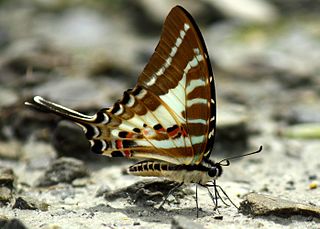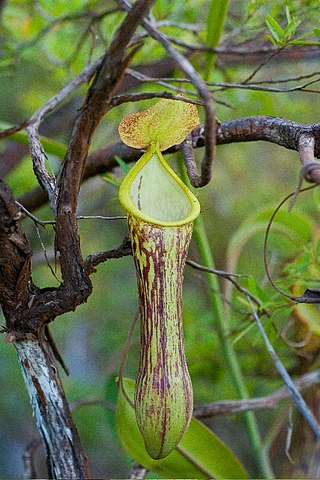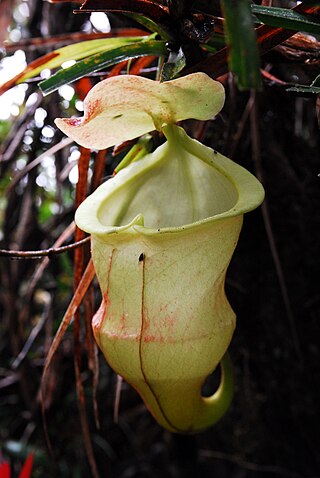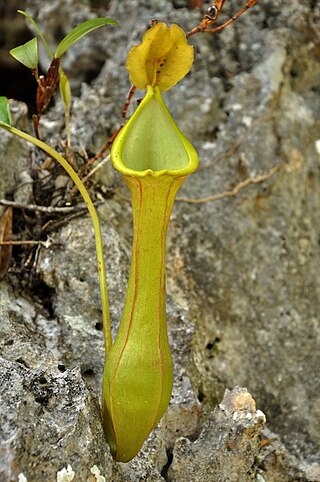
In the Philippines, regions are administrative divisions that primarily serve to coordinate planning and organize national government services across multiple local government units (LGUs). Most national government offices provide services through their regional branches instead of having direct provincial or city offices. Regional offices are usually but not necessarily located in the city designated as the regional center.

Northern Mindanao is an administrative region in the Philippines, designated as Region X. It comprises five provinces: Bukidnon, Camiguin, Misamis Occidental, Misamis Oriental, and Lanao del Norte, and two cities classified as highly urbanized, all occupying the north-central part of Mindanao island, and the island-province of Camiguin. The regional center is Cagayan de Oro. Lanao del Norte was transferred to Northern Mindanao from Region XII by virtue of Executive Order No. 36 in September 2001.

Gingoog, officially the City of Gingoog, is a 1st class component city in the province of Misamis Oriental, Philippines. According to the 2020 census, it has a population of 136,698 people.

The warbling white-eye is a small passerine bird in the white-eye family. The specific epithet is occasionally written japonica, but this is incorrect due to the gender of the genus. Its native range includes much of East Asia, including the Russian Far East, Japan, Indonesia, Korea, and the Philippines. It has been intentionally introduced to other parts of the world as a pet and as pest control, with mixed results. As one of the native species of the Japanese islands, it has been depicted in Japanese art on numerous occasions, and historically was kept as a cage bird.

Graphium aristeus, the chain swordtail, is a butterfly in the family Papilionidae (swallowtails). It is found in the Indomalayan and Australasian realms. subcontinental subspecies G. a. anticrates is protected by law in India. It is normally found in Sikkim, Bhutan, Meghalaya, West Bengal and Assam. In Pakistan, it is normally found in the reigns of Himalayas.

Nepenthes mindanaoensis is a tropical pitcher plant native to the Philippine islands of Mindanao and Dinagat.

The blue-backed parrot, also known as Müller's parrot is a large, endangered species of parrot endemic to the Philippines. It is found in tropical moist lowland forest but is now feared locally extinct in a large part of its range including Negros, Panay, Leyte, Luzon and Polilio. It now recently seen in Samar, Mindanao and Tawi-tawi. Flocks are small and often active at night. Its main threats are habitat loss and trapping for the pet trade.
The spotted imperial pigeon, also known as the grey-necked imperial pigeon, is a species of bird in the family Columbidae. Endemic to the Philippines, it lives in forests and forest edges but goes down to the limestone shorelines possibly to feed. It is a vulnerable species threatened by habitat loss and hunting.

Nepenthes hamiguitanensis is a tropical pitcher plant endemic to a single peak on the Philippine island of Mindanao, where it grows at elevations of 1200–1600 m above sea level. Once thought to be a natural hybrid between N. micramphora and N. peltata, this plant is now considered a species of possible hybridogenic origin. It produces squat upper pitchers that vary greatly in pigmentation, from red speckled to yellow throughout.

Cyrestis is a butterfly genus in the family Nymphalidae. They are known as map butterflies, so named because the wing-markings of some species resemble the lines of latitude and longitude of a world map. Cyrestis is a widespread genus ranging from Africa to parts of the Indomalayan realm and parts of the Australasian realm.

Cyrestis nivea, the straight-line map-wing, is a butterfly of the family Nymphalidae. It is found in South-East Asia. The habitat consists of primary and secondary forest at elevations between sea level and about 500 metres.

Atrophaneura semperi is a species of butterfly from the family Papilionidae that is found in Indonesia, Malaysia, and the Philippines. It is the type species for the genus.

Nepenthes ceciliae is a tropical pitcher plant endemic to the Philippine island of Mindanao, where it grows at 1500–1880 m above sea level. Its discovery was announced online in August 2011.

Nepenthes ramos is a tropical pitcher plant native to the northeastern Mindanao, Philippines. It is known from only a handful of herbarium specimens collected in 1919 at an elevation of 670 m above sea level. It likely grows in the forest on ultramafic soils.

Cyrestis acilia is a butterfly in the family Nymphalidae. It is found in Sulawesi the Australasian realm including Sulawesi mainland, Buton island, Kabaena island and Wowoni island. See subspecies.

Nepenthes viridis is a tropical pitcher plant endemic to the Philippines. It is known only from coastal areas at low altitude and has been recorded from Dinagat, Samar, and a number of surrounding islets. It is closely allied to the N. alata group of species.

Nepenthes cornuta is a tropical pitcher plant native to the Philippines. It is known only from the Pantaron Mountain Range of central Mindanao, where it grows terrestrially on ultramafic soils at around 1000 m above sea level.

Nepenthes talaandig is a tropical pitcher plant native to the Philippines. It is known only from the Pantaron Mountain Range of central Mindanao, where it grows terrestrially on ultramafic soils at around 1000 m above sea level.

Cyrestis cassander is an Indomalayan butterfly of the family Nymphalidae. It is endemic to the Philippines.

Drupadia theda, the dark posy, is a species of butterfly belonging to the lycaenid family described by Cajetan Felder and Rudolf Felder in 1862. It is found in the Indomalayan realm.
























